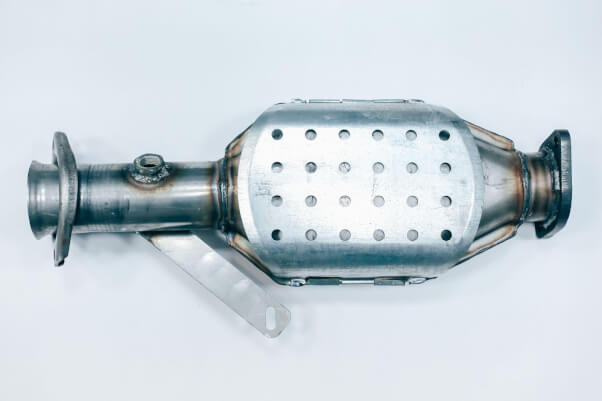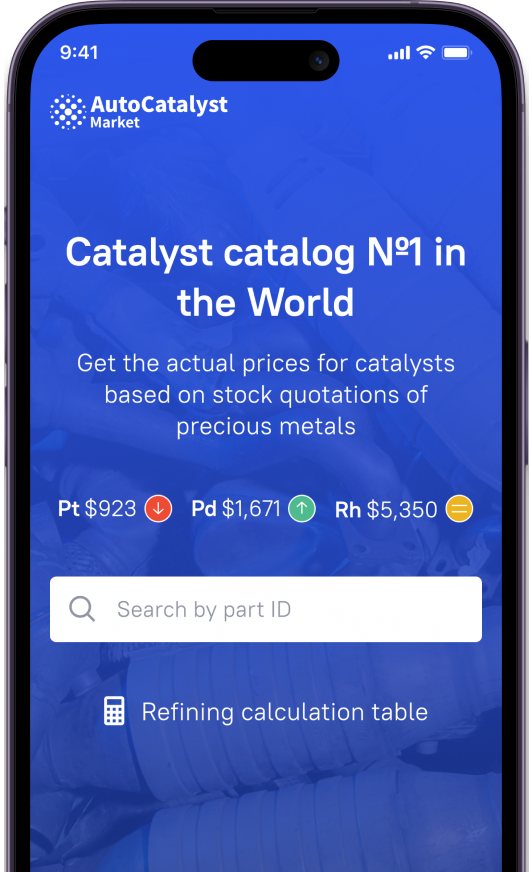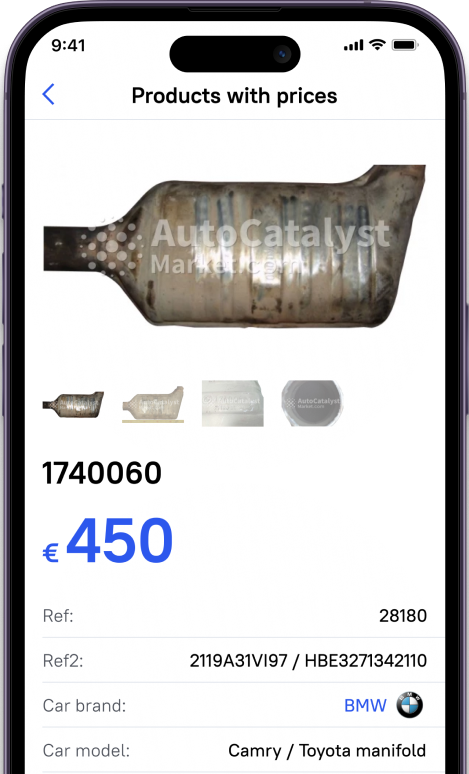- What to use instead?
- Can you recover catalysts?
- Pros of converter removal from the Exhaust
- Cons of Catalyst Removal
- What to do with the old catalyst after replacement?
Catalytic converters play a vital role in reducing harmful emissions from vehicles and machinery. In many countries, they are mandatory in accordance with regulations, as their use is good for the environment. However, they have a certain service life measured in 100, 000 - 200,000 km of car’s mileage. As a catalytic converter accumulates wear and tear you eventually notice the ‘Check Engine’ indicator on your dashboard starts blinking.
This wearing disrupts the engine's equilibrium by increasing temperature due to the mounting pressure that obstructs the smooth flow of exhaust gases. To counteract this, there's an upswing in oil consumption in the intake system, which occurs as the turbocharger undergoes wear and tear, permitting oil infiltration into the exhaust path. The catalytic converter's design accommodates two primary components: fuel and air, and when a third element enters the equation, it grapples. Consequently, a series of causal relationships unfolds: the catalyst cells clog, causing the catalytic converter to overheat and deteriorate. Microscopic particles settle on the cylinder walls, acting as abrasive agents, etching micro-grooves that have a detrimental impact on engine performance, potentially leading to engine seizure.
The replacement is not cheap, therefore, it is important to maintain and ensure that it is working properly. However, many drivers just cut them off to remove and still operate the car without a catalytic converter. Are there any benefits to that, and what are the drawbacks? Can you use something instead of a failed catalytic converter? – Coming in this article.
What to use instead?
It is important to understand that there is no direct replacement for deleted catalysts as they remain a crucial component for emissions reduction in traditional vehicles. But there are some alternatives still such as Electric vehicles (EVs) that produce zero tailpipe emissions which makes them clean alternatives to internal combustion engines. Another option is Hydrogen Fuel Cells which use fuel cells to produce electricity and emit only water vapor as a byproduct which is promising.
Can you recover catalysts?
If you have a gasoline-powered car catalytic converter, there is no other way of recovering or repairing it but only catalyst recycling to extract the precious metals contained within its honeycombs for further reproduction. On the other hand, if you operate a diesel-powered car, they have DPF (Diesel Particulate Filter) which has passive and active regeneration features. To conduct passive regeneration you have to drive at certain conditions maintaining consistent speed and constant car operation on a long distance, thus the DPF will clean itself off. If the passive regen is not working anymore, you can go to a service where they perform DPF combustion treatments to get rid of particles stuck in cells and now it has reusability.
Pros of converter removal from the Exhaust
The removal of a catalytic converter when it reaches the end of its service life can provide a minor boost to a vehicle's power. This occurs because the exhaust system encounters reduced resistance. If you were to subject a 90-horsepower car to testing at an automotive service facility, you'd observe a power increase of 2-3 horsepower when driving without a catalytic converter compared to a brand-new one. In the case of a faulty catalytic converter versus its absence, the power gain extends to 4-5 horsepower. In essence, this power increase falls within the range of measurement error, but it is nonetheless discernible.
Another advantage lies in the fact that if you're planning to replace your vehicle in the near future, there may be little sense in investing in such a costly component. This is due to the approximate alignment of a car's operational lifespan with the catalytic converter's service life, given similar mileage parameters.
Cons of Catalyst Removal
Among the drawbacks, the foremost concern is, undoubtedly, the environmental contamination it entails. Secondly, your vehicle will outright fail emissions testing, making it merely a short-term fix. The third drawback is that you'll end up with side effects such as the lingering scent of exhaust in the cabin, vibrations, and the possible additional fuel consumption of roughly 2-3%. This extra power doesn't manifest out of thin air.
What to do with the old catalyst after replacement?
There is no catalyst repair, however, used converters still retain the value presented by precious metals namely Platinum Palladium and Rhodium (PGM - platinum metal group). These metals are on the ceramic or metal honeycomb grid which is the core of the catalytic converter that operates redox reactions to reduce emissions of harmful substances. Therefore, even if the device is worn out there are buyers who are interested in buying catalysts of any type, condition, or scrap. You can find these dealer companies on the AutoCatalystMarket website. They will carry the recycling process for you which is very convenient, considering buyers near you can be found by choosing your region on the site as well. Having your catalytic converter serial number you can also estimate the price for it and get a lot of valuable info such as cat manufacturer its type and so on. This is a better way of worn catalyst utilization than simple disposal as you can save on purchasing a new one without harming the environment with the waste.









































